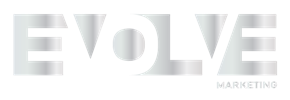Marketing is a crucial aspect of growth for any business and insurance companies are no exception. In order to succeed, insurance companies must be able to effectively convey the value of their products and services to their potential customers.
Marketing among insurance companies is particularly challenging because most consumers view insurance as a necessary expense, not something they would engage with. This is where methods of marketing for insurance companies come in.
The weak interaction between these business organisations and customers make creating, retaining and building brand loyalty difficult. So here are some tips to craft result-driven marketing ideas, particularly tailored for insurance companies.
Understand Your Target Audience
Knowing who your target audience is gives you an idea to base your campaigns around.
You can start identifying your target audience by looking at some demographics like age, location, income and relevant attributes such as interests, gender, values, income level and various pain points. Decide what interests they have that are compatible with your business and how you can bring them value where other insurance companies may be frustrating.
Identify Your Unique Selling Proposition
A unique selling proposition (USP) is what sets one company apart from another. It tells them exactly how your product,services or your brand in general is superior to another.
Your USP communicates your value or the unique benefit of your products or services to your target customers.
Having a clear idea of your USP can help you develop unique marketing ideas that respond to the specific needs of your target market. They will also highlight what your company, specifically, can offer to a wide range of audiences and groups.
Use Customer Testimonials
Generally, people use social proof as a means to gauge the trustworthiness or dependability of a certain brand. By seeing that their peers also favour your services, audiences are more inclined to believe in your company than if you had no proof at all.
One example of this is testimonials. A testimonial is one of the most popular methods when marketing for insurance companies and provides positive reinforcement for a call to action. It provides the target audience with more compelling reasons to click a link, download a brochure or fill out a form so they can get a glimpse of your service.
Testimonial placement strategy is also a factor in marketing. Try to place the testimonials in specific areas that are more frequented by your customers. These areas might be in your landing page, the home page or as part of the content in your email marketing campaign.
The use of testimonials was attributed to 62% more revenue according to a recent report among businesses that use them. Customers who interact with them are 58% more likely to convert.
Leverage Social Media
Utilising social media as a means to connect to your target audience is a popular approach many marketing companies do these days. These are great places to share your ideas, especially about the articles you have been writing on your company’s website or blog.
By sharing valuable content and engaging with your audience, you can eventually build trust and establish yourself as a true thought leader in your industry.
Marketing has also become easier with social media platforms becoming staple tools in our digital lives. Social media has become a growing trend in marketing because of how much information it gives to marketers.
It used to be that marketing strategies placed ads on television, radio and in magazines where everybody would see. This means they were wasting money on people who weren’t ever interested in their product or service.
Social media allows you to fine tune your marketing campaign to a specific audience. Now when you spend money on a social media ad campaign, every single ad is being used on someone who could be interested in your company.
Use Data And Analytics
You can’t improve what you don’t measure. This is especially true in marketing and in the insurance industry where data is everything.
The use of data and data analytics tools can help you understand the effectiveness of your marketing efforts and identify any areas for improvement. Tools like Google Analytics are perfectly suited to tracking Key Performance Indicators (KPI). Businesses use KPI to measure areas of the consumer journey that are necessary to success. These can be things like:
- Website views
- Social media engagements
- Percent of website visitors who contacted the company
- Average time people spent on their website
The key is tracking the right KPI. Tracking the wrong KPI could lead to time wasted on areas that are unrelated to your business goals.
Implement A Multichannel Approach
Nowadays, people have access to multiple platforms to gather information and make purchases. To make sure you reach the widest audience, it’s essential to adopt a multichannel strategy, which encompasses various marketing methods like email campaigns, social media and content marketing.
By following these tips, insurance companies can effectively communicate the value of their products and services to potential customers.The effective dialogue between your business and your audience will help build trust and credibility in your brand. It’s important to remember that the insurance industry is unique and challenging but with the right approach and strategies, companies can overcome these obstacles and achieve success in their marketing efforts. Stay ahead of the curve by continuously researching, testing and refining your strategies to ensure you’re providing the best value to your target market.
Are you looking to explore the potential of online marketing for your firm? Click here to gain access to our ROI Calculator and estimate the potential return on investment of our campaigns. Our team of digital marketing experts will also provide valuable marketing strategies to enhance your online presence. Sign up to our Newsletter now to take your firm’s marketing efforts to the next level.




